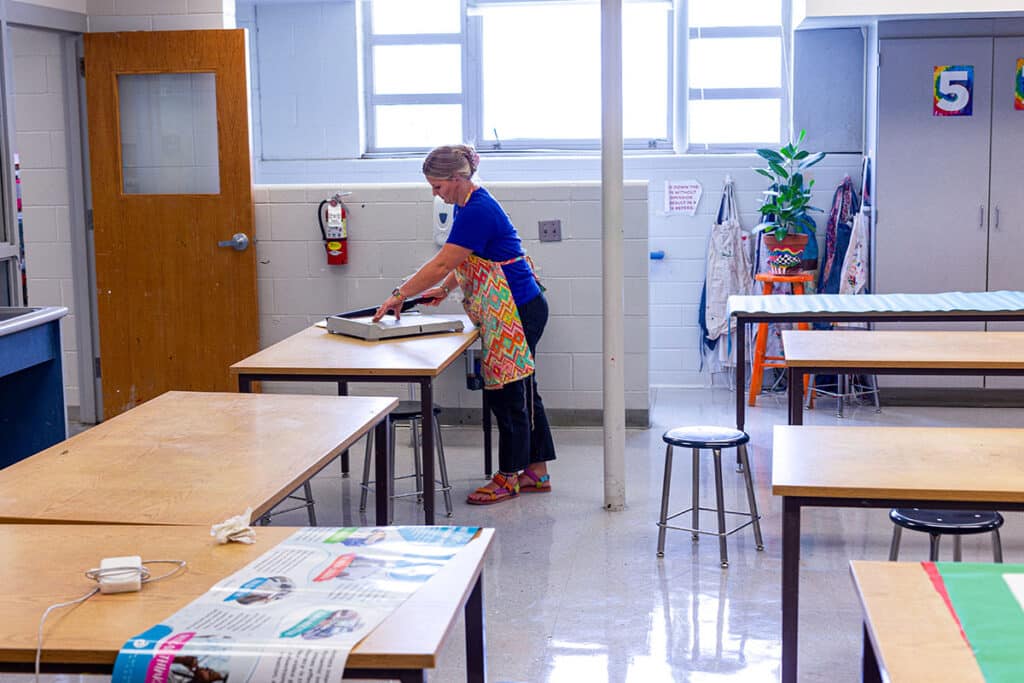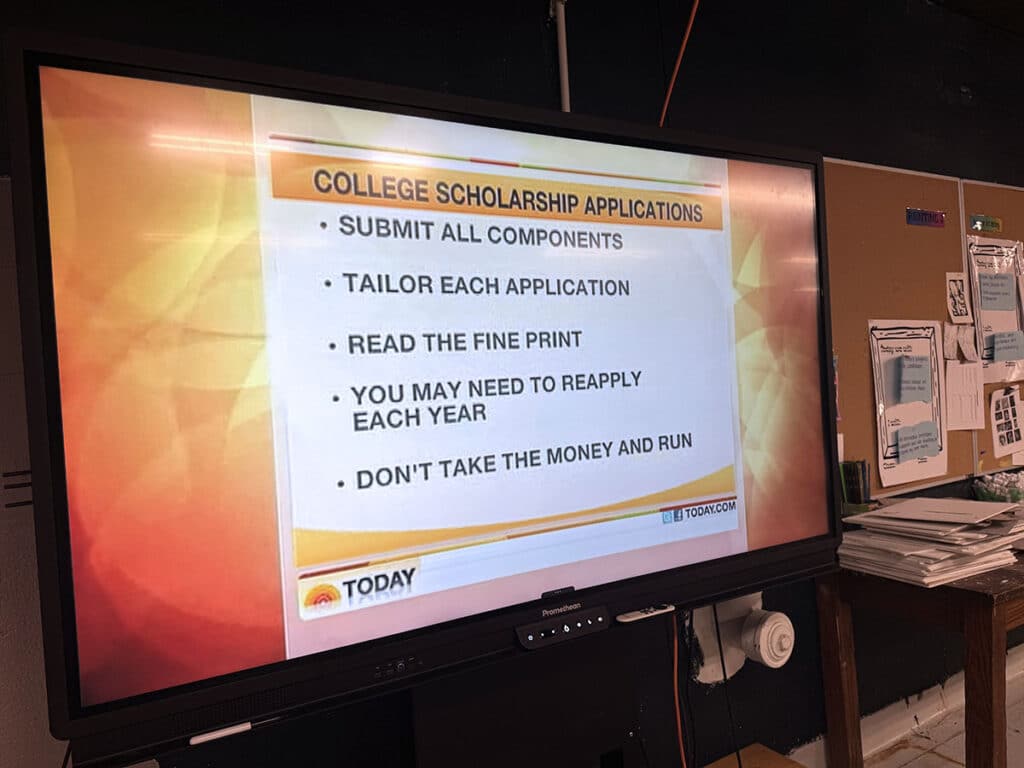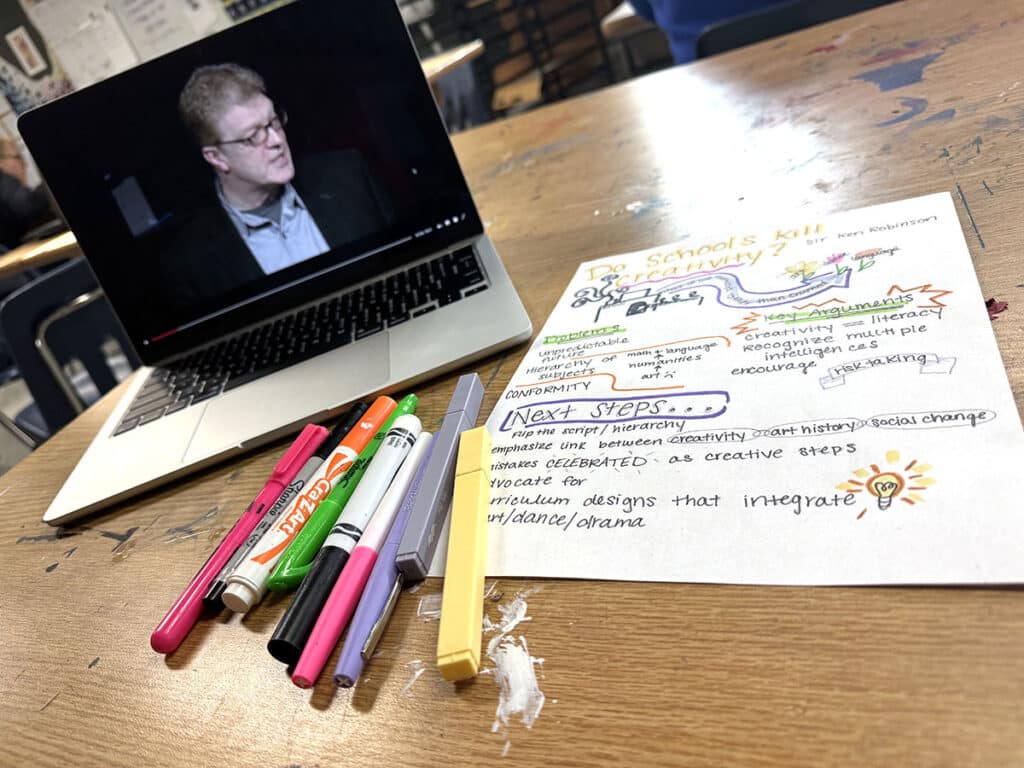
While our favorite “hat” to wear is the Art Teacher Hat, we sometimes have other required hats, such as the Homeroom Teacher Hat. While it can feel like a drag (or a bonus “free period”), being a Homeroom Teacher can also be a huge privilege. It can provide you with an extra chance to connect with students, spread the arts, and make a difference.
Harness the magnetic power of the art room and use Homeroom as an opportunity to promote your program and reach more students—without any extra work.

Art teachers are uniquely equipped to support students beyond the studio in a myriad of ways.
We love building relationships with our students, and Homeroom is another environment to do so! As the first class of the day, you’re the first teacher they will interact with. You are in a special position to set the tone for their day and school year, academically, socially, and emotionally. Maximize your impact without adding more work by creating a Homeroom routine that students understand, recognize, and follow, with the ideas below.
1. Make the art room a home base.
Homeroom gives our students a home base to start each day. It provides an opportunity to check in with a teacher who genuinely cares about them and is looking out for their well-being. This pairs well with the art room, a space that naturally draws students in—whether or not they are actually in your class. Make it welcoming and “home” for even more students!
Bonus: When your Homeroom students feel like the art room is their home, they’ll take ownership of the space. You’ll have extra hands to help with cleaning, tidying, and organizing!
2. Check in with students using drawing prompts.
While students are still waking up in the morning, provide them with a creative and non-verbal way to check in with you. Provide drawing prompts to share what they’re thinking about or feeling. Combine it with writing or doodling for students hesitant about drawing. You can use it to initiate meaningful conversations later in the period, or simply have it serve as an outlet for students to get things out of their system.

Bonus: Keep an eye out for students who enjoy the prompts and are naturally gifted at drawing! Invite these students to enroll in one of your classes.
3. Provide supplies for students to decorate their notebooks and folders.
You probably have an overflow of miscellaneous art supplies in your room. Think magazines, scrap papers, leftover paint, stickers, and more. Allow students to use your excess to decorate their notebooks, folders, and binders. They’ll have a blast flexing their creativity and individuality. It will also make their essential academic items more meaningful and valuable to them.

Bonus: Clean out your closet and bring art to more students—it’s a win-win!
4. Discuss post-secondary plans.
Be an active contributor to your school’s mission for college and career readiness by becoming an expert in art and design careers. You have valuable knowledge and connections in this field that your students would be lucky to benefit from. Simply ask a future-focused question once a week or once a month to generate frank conversations about life after high school.

Here is a list of questions to kick off the conversation:
- What kind of work gets you excited?
- How do you define “success” for yourself?
- What do you want your life to look like in five years?
- What are three careers that sound interesting to you?
- What kind of work environment do you see yourself in: office, outdoors, creative studio, classroom, lab, etc?
- How important is salary when choosing your career?
- What worries you most about life after high school?
5. Participate in Sustained Silent Reading.
Most students have phones, and their default is to grab them and use them as often as possible. Encourage them to put their devices away and pick up a physical book. Students are welcome to bring their own, and you can also provide some. Collect donations from local businesses and the library, and search online book sales and social media groups. Then, implement 20-30 minutes of Sustained Silent Reading (SSR) each week.

Bonus: Push through any initial groans and grumbles, and you’ll see students getting genuinely excited to read!
6. Teach focus techniques to build attention skills.
The school is full of distractions, and many students struggle with staying focused on the things that matter. Take some time to teach students focus techniques for the creative-minded that they may not have encountered in other academic classes. For example, show them how to take visual notes with sketchnoting and allow them to practice with short inspirational TED Talks. Or, turn on Focus Flow music and reflect on any changes in their attention and work ethic.

Bonus: TED Talks are a great way to infuse wisdom and valuable life skills while learning to draw their notes.
7. Establish Fun Fridays!
Set a goal for the week as a Homeroom group. This can be an attendance goal, an academic goal, or something fun, such as having everyone make an administrator laugh at some point during the week. If they meet their goal, they get a Fun Friday. You can play music, break out some board games, or do a group craft. Let students plan activities that will be motivating, and have them own the setup and cleanup—you provide the time and space.

Bonus: This also helps build a classroom community because students will hold their peers accountable to earn Fun Friday.
8. Allow conversation.
Students need time to socialize, and Homeroom can be a great space for this. You can model and monitor a respectful tone and healthy interactions. Feel free to join in by sitting with students at their tables! When you make it a goal to chat with each student at least once a week, you show them that each one of them matters.
Bonus: Get the latest updates from this group about memes, slang, and popular culture!
The art room is often the hub of the school where all students feel welcome. Extend this home base to your Homeroom students! You can play a valuable part in lifting their moods and broadening their perspectives every single day. Additionally, you’ll identify new talent for your program and promote art appreciation for everyone. Embrace Homeroom as an extension of the art room, and you’ll spark creativity and connection before the first bell ever rings!
What is another unique way that you support students outside of the studio?
How has facilitating Homeroom contributed to your art program?
To chat about being a Homeroom teacher with other art teachers, join us in The Art of Ed Community!
Magazine articles and podcasts are opinions of professional education contributors and do not necessarily represent the position of the Art of Education University (AOEU) or its academic offerings. Contributors use terms in the way they are most often talked about in the scope of their educational experiences.







